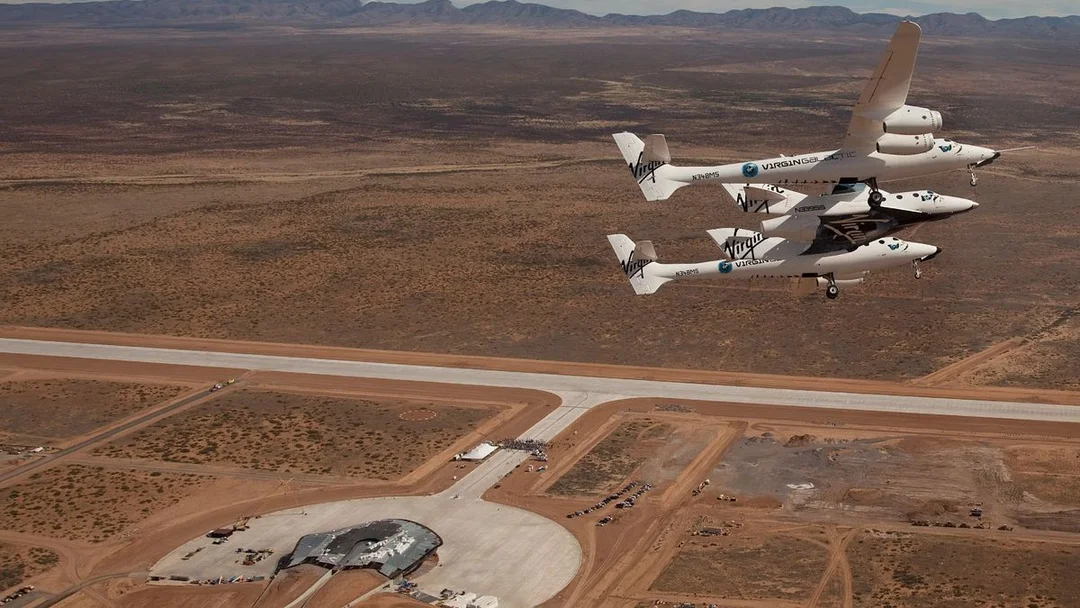
Spaceport America: New Mexico’s Hub for Orbital Ambitions and Expanding Horizons
Spaceport America, the world's first purpose-built commercial spaceport in New Mexico, is setting its sights beyond suborbital flights and aiming for orbital launch and reentry capabilities. According to Executive Director Scott McLaughlin, the spaceport is actively preparing to meet the demands of a rapidly evolving space market.

Spaceport America boasts a "rocket-friendly environment" with 6,000 square miles of restricted airspace, low population density, and an expansive runway. Currently, it hosts a diverse range of commercial space industry tenants, including Virgin Galactic, SpinLaunch, Up Aerospace, and Prismatic.
McLaughlin highlighted the spaceport's adaptability, stating, "We have distinct areas of the spaceport, but not so distinct that we can't do different things at different times." This flexibility allows Spaceport America to cater to various needs, from vertical and horizontal launches to testing and payload processing.
Vertical Launch Area (VLA) developments are underway, focusing on creating a site ready for orbital vertical launches. "We're focused on getting water to that location, and also have a facility that protects operations there — like payload processing — from the sun, rain and weather," McLaughlin explained.
Significant interest lies in horizontal launch capabilities. Expanded access roads and a new hangar, serving as a security center, STEM education hub, and leasable office space are in development, marking a significant change for the spaceport.
Spaceport America is also diversifying its services, functioning as a civilian test range, accommodating high-altitude UAVs, and even considering engine production. "We believe we're about to sign a data center, one that's able to provide services to our customers who want low-latency, artificial intelligence, or high-powered computing," McLaughlin added, emphasizing the importance of being broadminded to attract customers and generate revenue.
Virgin Galactic's suborbital flights have been a significant draw, with hopes for increased flight frequency in the coming years. McLaughlin noted the potential impact: "Our goal is to see Virgin Galactic fly in a year or so, hopefully flying twice a week, and that will have a big impact on the spaceport." He also highlighted the economic benefits for New Mexico, as passengers often bring along numerous family members and friends to explore the area.
Looking ahead, Spaceport America is exploring partnerships with White Sands Missile Range, including the prospect of an electromagnetic pulse facility. Reentry capabilities are also a key focus, with plans for a dedicated site near the spaceport for capsule returns and other reentry operations.
McLaughlin acknowledged the competition from ocean-neighboring launch sites but emphasized Spaceport America's advantages: "We'll be a good alternative especially if you're going to do a small to medium-sized launch, and you need to do it quickly, and perhaps do it more securely than you would if you were to fly over water." This benefit has attracted interest from the Department of Defense.
New Mexico's Space Trail highlights the state's rich history in space exploration, from Robert H. Goddard's pioneering rocketry work in Roswell to the first American rocket launch into space at White Sands Missile Range. The weather conditions in New Mexico, with plentiful sunshine and low humidity, make it ideal for space-related research and testing.
Spaceport America symbolizes more than just space tourism. It is poised to drive scientific endeavors and technological innovations. By focusing on being adaptable and responsive to industry demands, Spaceport America is working to become a crucial component of America's aerospace infrastructure.
What are your thoughts on the future of commercial spaceports and their role in advancing space exploration? Share your opinions in the comments below!